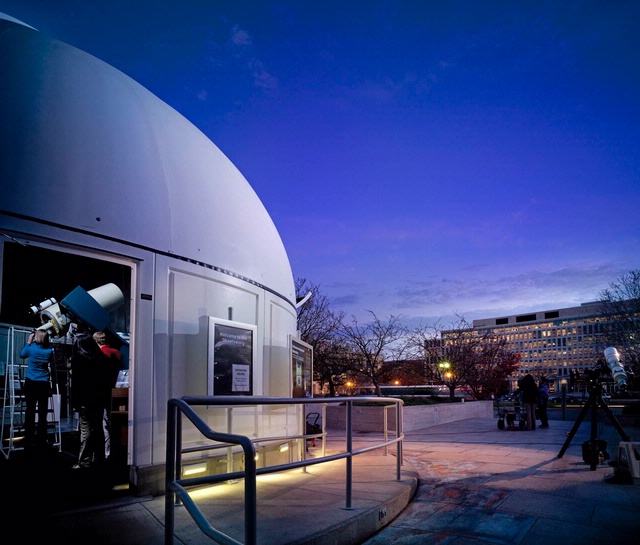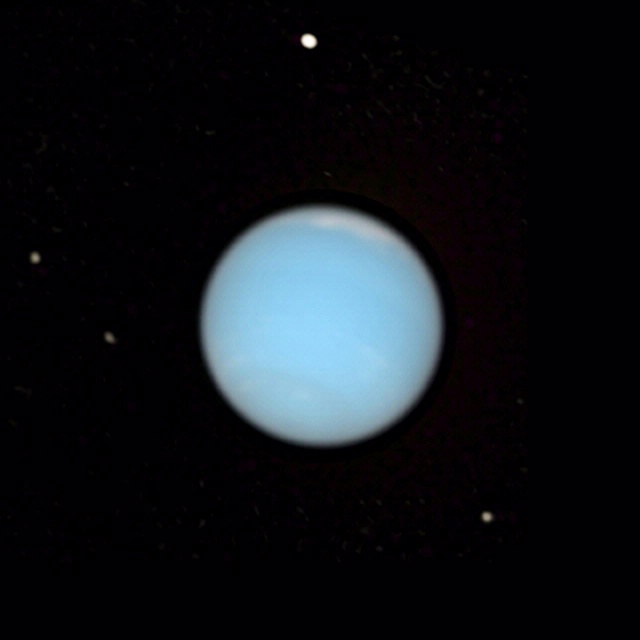At our evening observing sessions at the Public Observatory, we’ve shared views of Mars, Jupiter, Saturn, the Moon, and other astronomical objects with thousands of visitors. But Neptune, the most distant planet in the Solar System, is one that I’ve not yet looked at with the main 16” telescope.
 Visitors gather to use telescopes at the Public Observatory. Photo credit: National Air and Space Museum, Eric Long.
Visitors gather to use telescopes at the Public Observatory. Photo credit: National Air and Space Museum, Eric Long.
The spectacular sights of the closer planets will be below the horizon for our next stargazing session, this Saturday night from 6:30 – 8:30 PM. As the last remnants of Hurricane Sandy dissipate, we anticipate clear skies. We will point our 45-year-old telescope further afield, at the gas giant Neptune, almost 3 billion miles away.
 Hubble Space Telescope image of Neptune and some of its moons. Our view will not be nearly this detailed, but if the weather is good, we will see Neptune’s color.
Hubble Space Telescope image of Neptune and some of its moons. Our view will not be nearly this detailed, but if the weather is good, we will see Neptune’s color.
Visitors will use an assortment of telescopes to observe the sky. Because the Observatory is located in Washington, DC, where the light-polluted skies never get very dark, some objects are not visible no matter how large a telescope we use. The Andromeda Galaxy is by far the biggest object visible to the naked eye, but only from a very dark location. It is hard to appreciate its glory from the city. Through our telescope, it shows up as a dim, slightly fuzzy dot. Galaxies, nebulae, and globular clusters of stars look best from locations under a truly dark sky, such as our monthly star parties at Sky Meadows State Park in Northern Virginia. The next star party is on November 10th, and it's the last one until next April. Instead, during evening programs at the Public Observatory in DC, we usually observe bright objects like the planets, stars, and star clusters. This Saturday, while the 16” offers views of Neptune, one of our telescopes will point at the binary star Almach. The telescope will “split” the star into two, one gold and one blue. The blue one is actually three hot blue stars in close orbit. We look forward to discussing with our visitors how most of the stars we see in the sky are actually multiple-star systems. We hope to see you there! Geneviève de Messieres and Katie Nagy are Astronomy educators at the National Air and Space Museum.